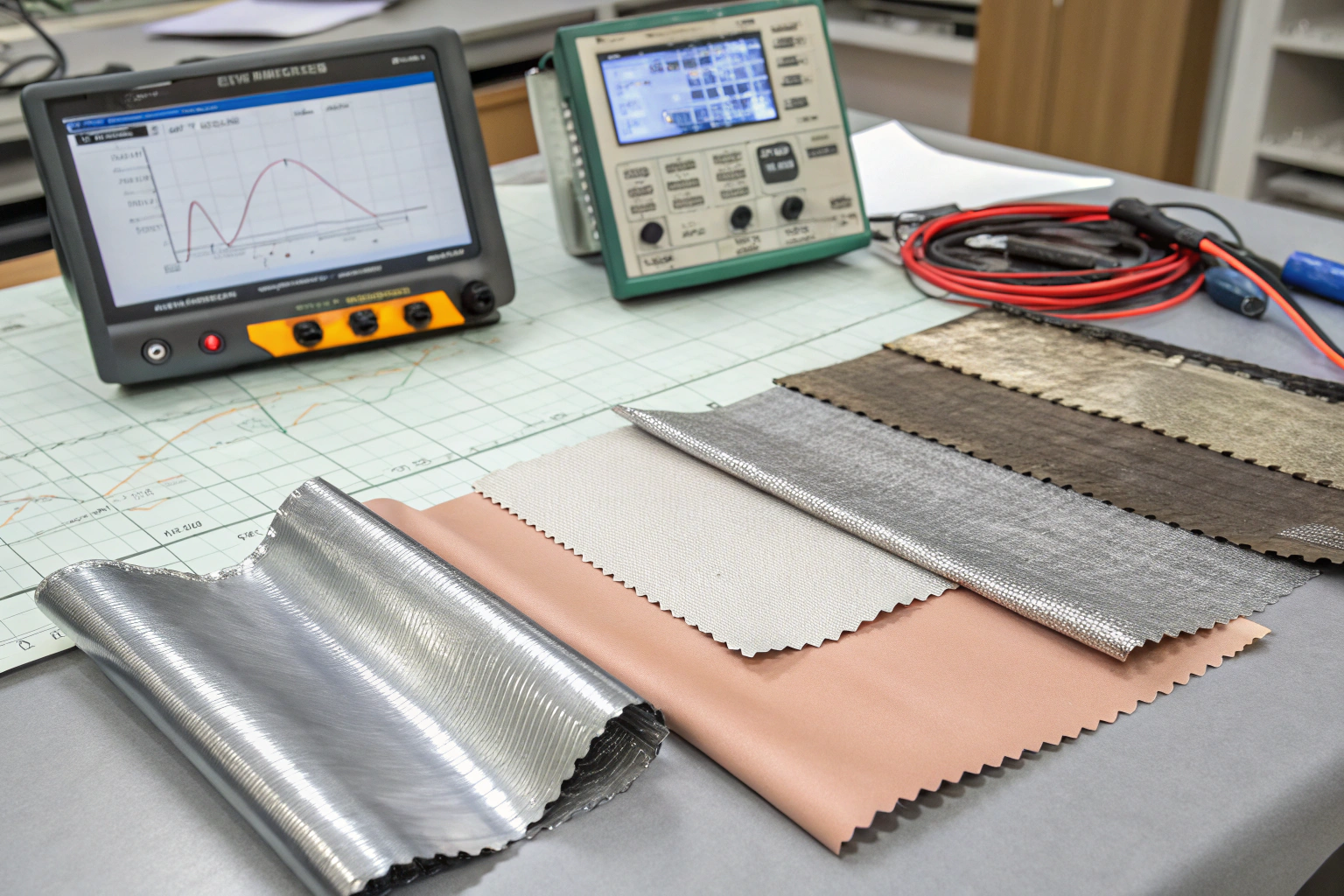In a world dominated by wireless signals—5G, Wi-Fi, Bluetooth, and RFID—electromagnetic interference (EMI) has become a growing concern, especially in sensitive environments like hospitals, data centers, or wearable tech. For consumers and professionals alike, shielding fabrics offer a critical layer of protection against harmful electromagnetic fields (EMF).
Shielding fabrics are designed to block, reflect, or absorb electromagnetic radiation. Made from high-conductivity materials like silver, copper, or stainless steel, these fabrics provide reliable EMF shielding across various frequencies—from radio to microwave bands.
At Fumao Fabric, we offer an advanced range of EMF shielding textiles for applications including technical wearables, EMF-blocking curtains, and military-grade enclosures. With certified shielding effectiveness and international export readiness, our fabrics are trusted by global buyers seeking safety and performance.
What Are EMF Shielding Fabrics and How Do They Work?
EMF shielding fabrics are engineered materials that protect against electromagnetic radiation by reflecting, absorbing, or conducting it away from sensitive components or human skin.
These fabrics typically incorporate metal filaments or coatings—such as silver, copper, nickel, or stainless steel—woven or laminated into textile substrates like polyester, cotton, or nylon.
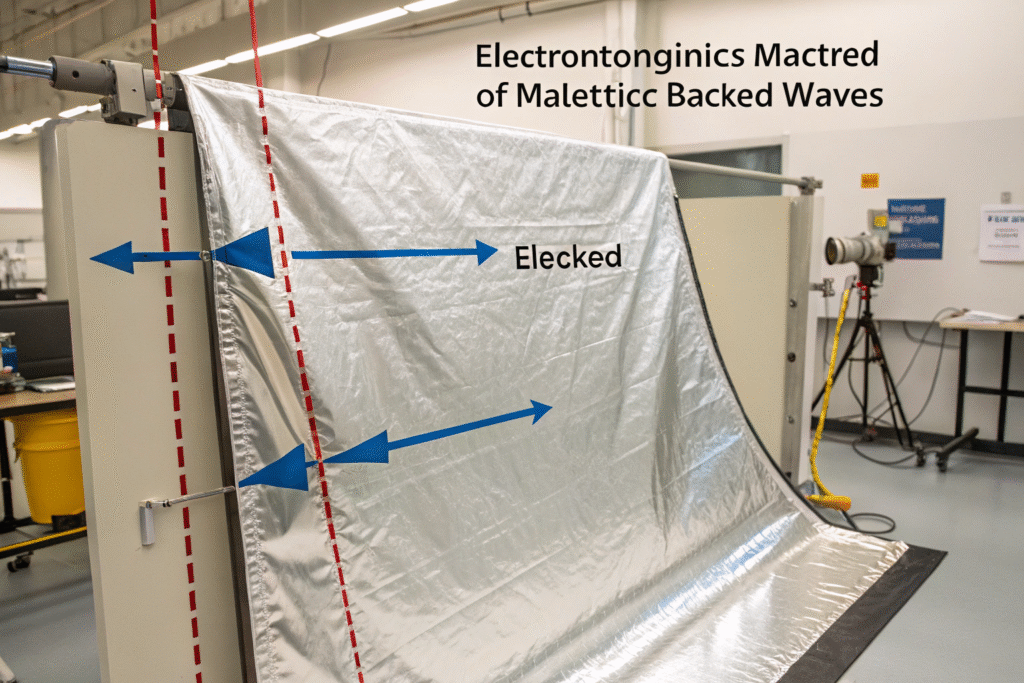
How Do These Fabrics Block EMF Radiation?
EMF shielding works through three main mechanisms:
- Reflection: Conductive surfaces bounce back incident waves (like radio and microwaves)
- Absorption: Dielectric properties reduce signal amplitude through energy dissipation
- Attenuation: Overall signal weakening measured in decibels (dB)
Common attenuation ranges are 20–80 dB, depending on frequency. Learn more about EMF physics from EMFields Solutions and RF Safe.
What Are the Key Frequency Ranges for Shielding?
Shielding fabrics typically target:
| Frequency | Source | Common Fabric Type |
|---|---|---|
| 30 MHz – 3 GHz | Wi-Fi, cell phones, Bluetooth | Silver nylon, copper polyester |
| 3 GHz – 40 GHz | 5G, radar, microwave devices | Nickel-coated ripstop, hybrid blends |
| 100 kHz – 30 MHz | RFID, smart meters | Carbon-coated cotton, conductive knits |
At Fumao, we offer tested materials with shielding reports verified from 1 MHz to 40 GHz.
Which Materials Are Most Effective for EMF Shielding?
The shielding power of a fabric largely depends on the conductivity and structure of its metallic component.
Silver, copper, and stainless steel are top-performing materials due to their low resistance and wide shielding range. However, durability, cost, and corrosion resistance also matter when selecting the best fabric.
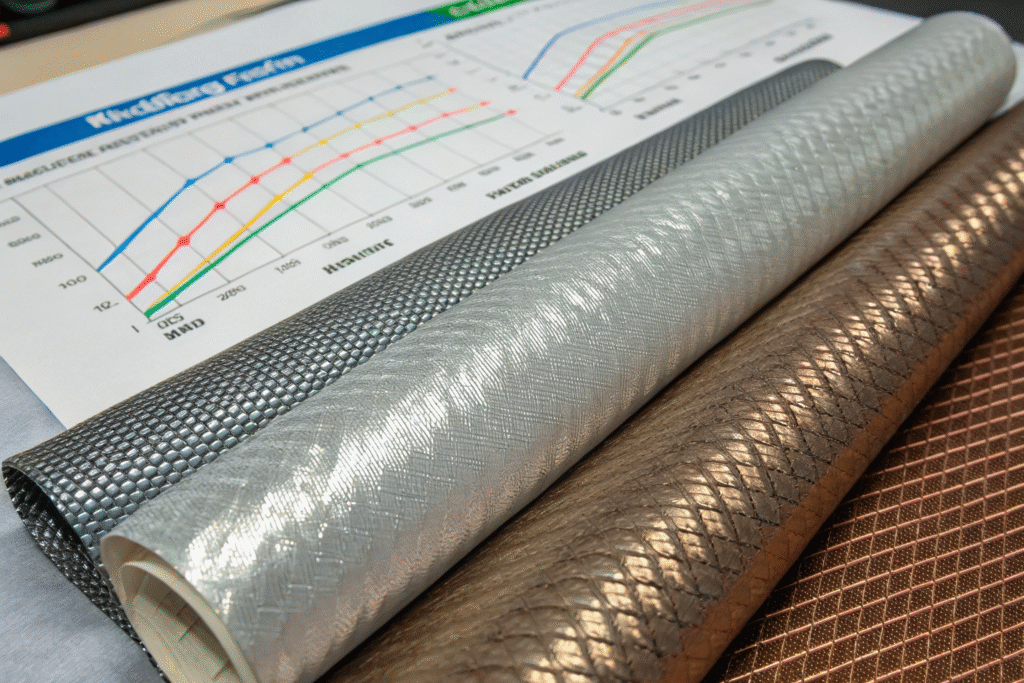
How Do Different Metals Compare in Shielding Performance?
| Metal | Shielding Effectiveness | Key Benefits | Drawbacks |
|---|---|---|---|
| Silver | Excellent (40–80 dB) | Antibacterial, soft | Expensive, tarnish risk |
| Copper | Very Good (30–70 dB) | High conductivity | Oxidizes quickly |
| Stainless Steel | Good (25–60 dB) | Durable, washable | Less flexible |
| Nickel | Targeted (RF/microwave) | Magnetic shielding | Allergenic, rigid |
See detailed performance data at Shielding Fabrics by LessEMF and Aaronia EMF Lab.
Are Natural Fiber Blends Available for Shielding?
Yes. At Fumao, we produce silver-cotton, copper-viscose, and stainless-steel-linen blends that offer a softer handfeel with moderate shielding.
These are commonly used in:
- Anti-EMF maternity wear
- Bedding and undergarments
- Shielded apparel for electro-sensitive individuals
What Are Common Applications for EMF Shielding Fabrics?
Shielding fabrics have evolved from niche military use to everyday consumer protection. Whether it’s for personal safety, industrial integrity, or medical electronics, their application is expanding.
From fashion to architecture, shielding fabrics are protecting devices, data, and people from electromagnetic exposure.
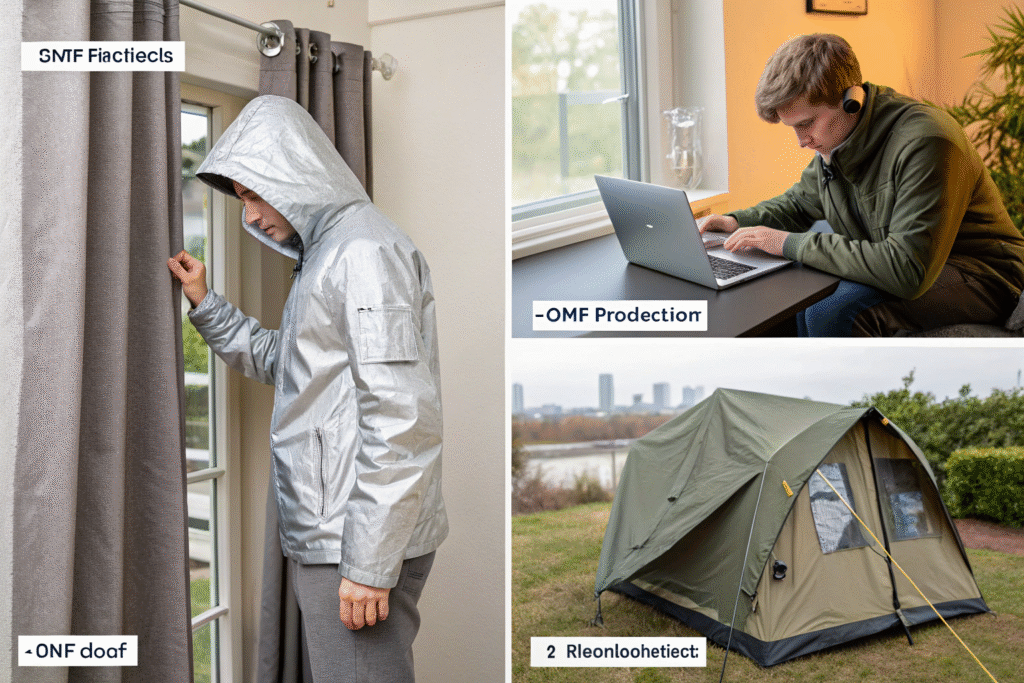
Which Apparel Products Use EMF Shielding Textiles?
Growing categories include:
- Anti-radiation hoodies and underwear
- Smartphone-shielding pockets or sleeves
- RFID-blocking wallets and passport holders
Many products now integrate Swiss Shield® fabrics or BlocSilver™ materials.
What Industrial Uses Require Shielding Fabrics?
- Cleanroom apparel in electronics factories
- EMI tents and Faraday pouches for defense and research
- Shielding enclosures for signal isolation in labs
- Medical instrument covers (e.g., MRI shielding)
Fumao supports OEM development for such clients with flame-retardant or waterproof laminates.
How to Test and Source Certified EMF Shielding Fabrics?
Not all shielding claims are equal. EMF protection must be scientifically measured and frequency-specific. Test methods and certifications ensure fabrics actually block harmful waves as promised.
When sourcing shielding fabrics, buyers should demand lab-tested dB reports, verified conductivity, and consistent surface resistance levels.
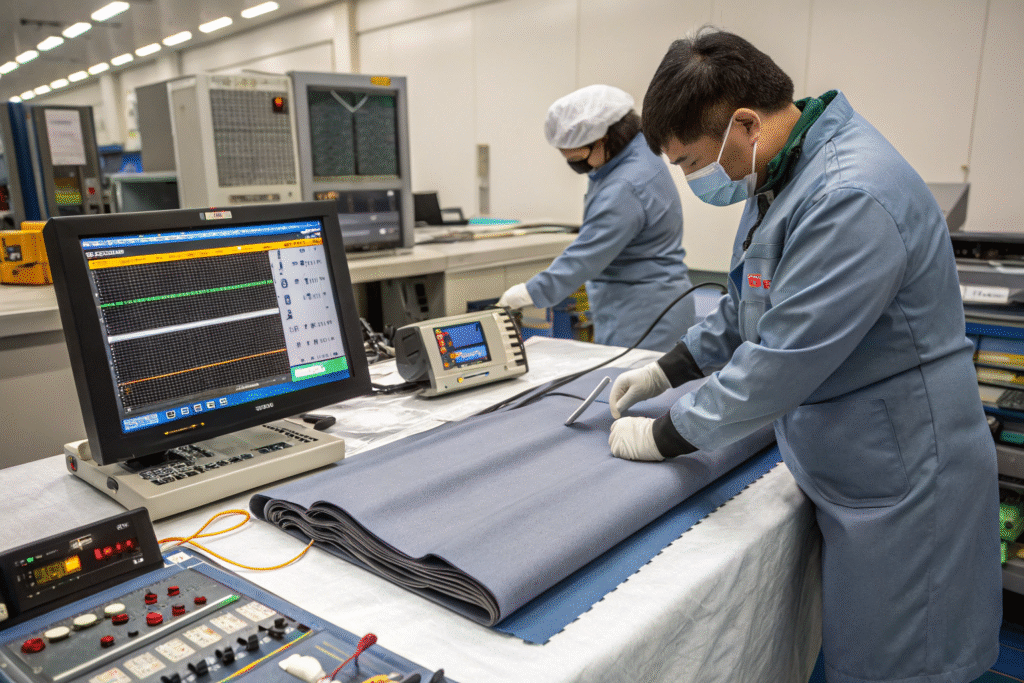
What Tests Confirm EMF Shielding Effectiveness?
- IEEE-STD-299: Standard method for shielding attenuation in enclosures
- ASTM D4935: Transmission line method (flat material)
- Surface Resistivity (Ω/sq): < 10⁴ Ω/sq = excellent shield
- EMF Attenuation (dB): 30 dB = 99.9% signal block
Third-party labs like SGS and EMITECH Group provide credible verification.
What Should Buyers Ask Before Placing Orders?
- What is the minimum shielding dB across key bands (1–40 GHz)?
- Are the fabrics washable or laminated?
- What is the surface resistance?
- Can you provide certified EMF test reports?
- What is the coating type (silver, copper, nickel)?
Fumao provides QR-coded test reports, production batch logs, and dB verification across multiple frequencies for each shielding product.
Conclusion
Electromagnetic shielding fabrics offer a reliable way to protect against radiation from modern devices and networks. With silver, copper, and stainless steel options—each suited to different applications—these fabrics form the backbone of safe, EMF-conscious design in both technical and consumer sectors.
At Fumao Fabric, we provide globally certified EMF shielding fabrics with verified attenuation levels, lab-tested conductivity, and custom construction options for apparel, interiors, and industrial use.
Interested in sourcing EMF shielding fabrics with real test data? Contact our Business Director Elaine at elaine@fumaoclothing.com to request samples and certified performance reports today.

